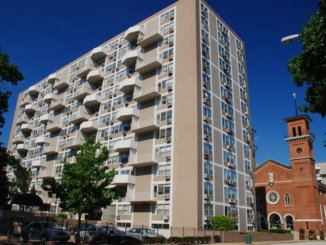
Market volatility is creating opportunities for well-capitalized investors, according to Shlomi Ronen of Dekel Capital.

It’s been quite an eventful stretch in the capital markets this past month as investors and lenders processed strong inflation reports and the Fed issued an equally strong response to slow the rate of inflation. The uncertainty about the future has led many to take a pause and revaluate what the future holds for commercial real estate, weighing the prospect of ongoing inflation or a hard economic landing into a recession.
The speed of the market reaction has been somewhat surprising, albeit supportable, given that the vast majority of our active market participants have never experienced inflation as working adults. The last time we had CPI above 8.6 percent was December 1981. A 22-year-old, recent college graduate then would be 63 today and nearing retirement.
Yes, this inflationary world we are living in is new to many of us. In unfamiliar economic times like these, the past can be a useful guide. I’d argue that the late 1970s and early ‘80s were vastly different: Our economy has shifted from manufacturing to a service-based one, and we have a Fed that is very proactive with an arsenal of tools that they have readily deployed to manage economic growth, including ‘Quantitative Easing’ and tightening via increasing the fed funds rate.
Adjusting Expectations
Nevertheless, the current high inflation environment with the prospects of higher treasury rates have led both investors and lenders to reassess their underwriting assumptions along with future valuations and cap rates. This has been the most impactful in the value-add and bridge-lending sector, especially in the multifamily space where fundamentals have been strong and cap rates tightened as investors underwrote aggressive rental growth. As the bridge lenders that have been financing these value-add business plans scale back their leverage and widen their credit spreads, leveraged returns for all value-add business plans have decreased. Combined with the uncertainty over exit cap rates and, in light of increasing treasury rates, multifamily investors are having to temper their pricing in order to achieve acceptable risk-adjusted returns.
Further challenging the value-add business plans is affordability. Even in markets that have little to no regulatory constraints on supply we’ve seen strong rent growth in recent years. However, the prospects of continued rent growth and affordability are being challenged by inflation because wage growth is not keeping up with CPI, according to the U.S. Bureau of Statistics. The Real Average Hourly Earnings in the U.S. declined by 3.0 percent year-over-year in May 2022.
All of this has amounted to market volatility that is presenting investment opportunities for well capitalized investors. Now more than ever, the importance of relationships both on the debt and equity capital is paramount in order to access capital to take advantage of this (likely temporary) market dislocation.
Source: Multihousingnews.com



